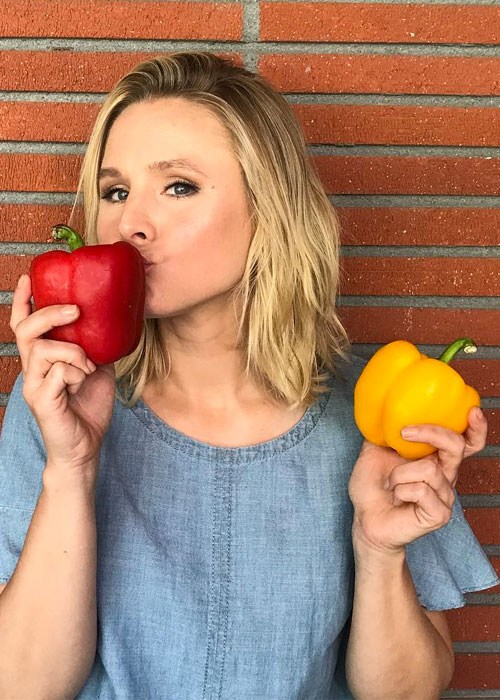And they’re pretty easy to stick to
With so many food trends and new types of diets floating around (such as the keto diet and Whole30 diet), it’s no wonder that the meaning of healthy eating is so skewed and hard to measure on a daily basis. Here, Simone Austin, sports dietician and Swisse Wellness Expert, shares with us an insight into Australian diet trends, and what we should be consuming less and more of.
#1 / Choose carbohydrates carefully
The situation: Carbohydrates, such as those found in bread, pasta and rice, have a pretty bad rap - but the truth is, we shouldn’t be cutting them out of our diet. “Some people believe bread has too much sugar in it when it is actually low in sugar,” tells Austin. “It is about the quality of carbohydrate and choosing wholegrains that is important.”
The solution: “Wholegrains can help with reduction of bowel cancer, reducing cholesterol levels, improving blood glucose levels and weight management. Wholegrains are more than just fibre, they provide a range of important micronutrients and phytochemicals to support overall health. A range of rice varieties are also now more readily available including wild rice, red and black. Some of these are higher in protein and dietary fibre than the traditional polished white rice. The fibre from any wholegrain is valuable food for gut bacteria,” explains Austin.
#2 / Focus on protein
The situation: If you’re a fan of cutting out meat at least once a week, you’re not alone. “Australians are buying, per head, less meat than previously with beef the most popular form. People are trying options such as ‘Meatless Monday’ and flexitarian (increasing intake of plant-based meals without completely eliminating meat). There is a rise in the number of vegetarian and vegan diets,” says Austin.
The solution: It’s simple - weave light sources of protein, such as fish, into your diet frequently. “Try having fish for an evening meal once or twice a week – oven-cook or pan-fry a fillet of fish with some extra virgin olive oil, garlic, lemon juice and herbs served with roasted vegetables. Sardines on toast, tuna or salmon in a wrap, or salad and sashimi are all simple ways to incorporate [protein] into your diet, too.”
#3 / Consider your dairy intake
The situation: Just have a look at your local cafe’s menu or even the supermarket aisles - the latest trends show that there’s been a big movement towards choosing plant-based milks over cow’s milk. But these alternatives aren’t necessarily as nutritious. “Milk is an animal product high in protein and dairy with well-absorbed, naturally occurring calcium. Plant-milks are lower in protein, dairy and some other nutrients,” shares Austin.
The solution: If you’re not a fan of dairy, you should try a mix of milk and milk alternatives. “Soy is the closest nutrition comparison to dairy, so it’s best to look for calcium-fortified versions and always read product labels to review ingredients. For example, almond milk can vary from five to 14 percent almonds and the rest is purified water.”
#4 / Cook with olive oil
The situation: “[One of the biggest food myths is] that you can’t cook with extra virgin olive oil.” Turns out, that you can absolutely do so.
The solution: Austin gives olive oil her tick of approval, “As long as it is fresh, good quality extra virgin olive oil, and not just olive oil”. She explains, “The chemical structure of the monounsaturated fat [found in olive oil] has one double bond and this is protected by the natural antioxidants of the fresh oil. You can therefore fry with it, bake, whatever you like”.
#5 / Snack smart
The situation: Chips and biscuits are all quick fixes when hunger hits, but they’re not the best snack choice on offer.
The solution: “The fibre and healthy fats [in nuts] make them a great snack and studies have shown how good they are for the heart, and some, like walnuts, [are good] for our brain and memory,” says Austin.
#6 / Eat more vegetables - even more than you think
The situation: It’s been drilled into our brains that we need to be eating vegetables, however we’re still not reaching the recommended intake daily. “We know from the 2012 Australian Dietary survey that 93 per cent of Australians are not eating the recommended servings a day of vegetables,” reveals Austin.
The solution: According to the Australian Dietary Guidelines, women should be eating five serves of vegetables a day, with each serve being about 75 grams.
#7 / Consume less sugary drinks
The situation: If you’re someone that likes to reach for a juice or fizzy drink regularly, then the following statistic might shock you. “According to the ABC, Australians bought 1.28 billion litres of sugar-sweetened drinks, including fruit juice which contains around 10 per cent sugar - the same as soft drink. Even though the prevalence of this is decreasing slightly, Australians are still drinking too many sweetened beverages.”
The solution: Keep an eye on your intake of sugar-sweetened drinks, and try alternatives such as water flavoured with fruit or herbs.
Want better skin? Here are six foods you should eat to boost the appearance of your complexion.
What’s your best tip for consistently eating a healthy diet? Let us know in the comments below.
Main image credit: @kristenanniebell

Iantha is BEAUTYcrew's Beauty Editor, and has been part of the team since the site launched in 2016. Besides pinky-nude nail polish and wispy false lashes, she has a healthy obsession with face masks and skin care ingredients. Her previous work can be found in Virgin Australia Voyeur, Women's Health, and SHOP Til You Drop.








